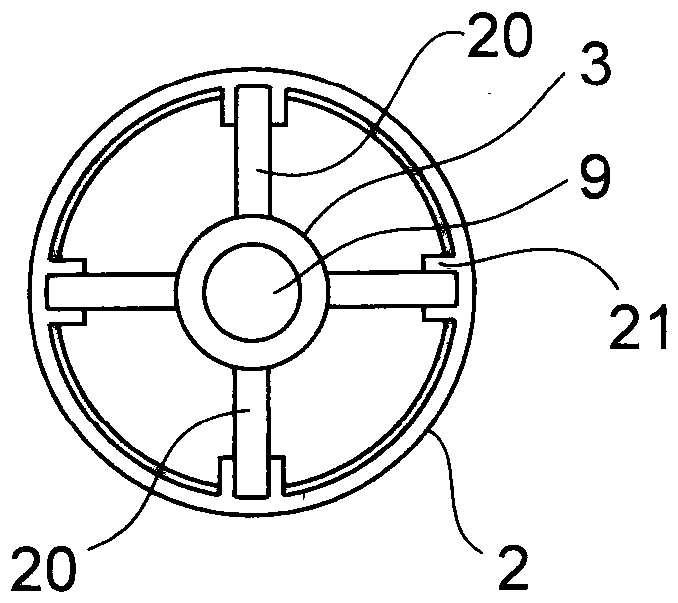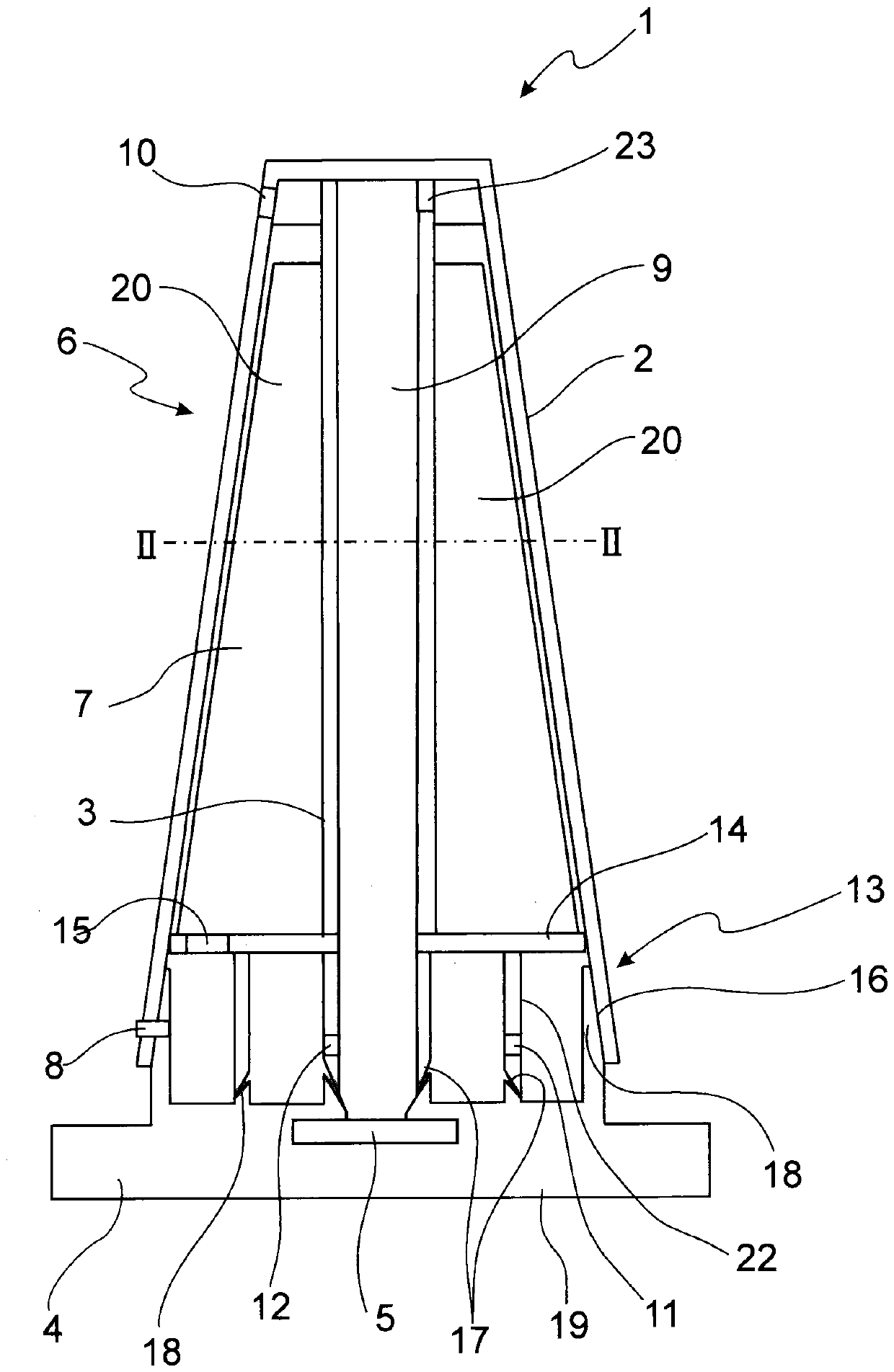Device for measuring fill level of liquid in container with ultrasonic sensor
A technology for ultrasonic sensors, filling levels, applications in measuring devices, material analysis using acoustic/ultrasonic/infrasonic waves, sound-generating instruments, etc.
- Summary
- Abstract
- Description
- Claims
- Application Information
AI Technical Summary
Problems solved by technology
Method used
Image
Examples
Embodiment Construction
[0017] exist figure 1 The device 1 is shown in a cutaway side view. The device 1 essentially consists of a combination of a sound absorbing cup 6 and a base element 4 , which in the present embodiment is designed as a flange 19 . An ultrasonic sensor 5 is integrated in the base element 4 or arranged thereon. The base element 4 is designed here as a flange 19 , it is also evident that the flange 19 protrudes laterally beyond the structural surface of the sound absorbing cup 6 in order to form the fastening region here. A measuring tube 9 extends over the ultrasonic sensor 5 , in which measuring tube 9 the actual measurement takes place. The ultrasonic sensor 5 emits ultrasonic waves which propagate upwards in the measuring tube 9 , are reflected at the interface liquid / air and are then picked up again by the ultrasonic sensor 5 as reflected ultrasonic waves. From the travel time of the ultrasound waves, the distance of the ultrasound sensor 5 to the interface and thus the fi...
PUM
 Login to View More
Login to View More Abstract
Description
Claims
Application Information
 Login to View More
Login to View More - R&D
- Intellectual Property
- Life Sciences
- Materials
- Tech Scout
- Unparalleled Data Quality
- Higher Quality Content
- 60% Fewer Hallucinations
Browse by: Latest US Patents, China's latest patents, Technical Efficacy Thesaurus, Application Domain, Technology Topic, Popular Technical Reports.
© 2025 PatSnap. All rights reserved.Legal|Privacy policy|Modern Slavery Act Transparency Statement|Sitemap|About US| Contact US: help@patsnap.com


